Amazingly original 1951 Morris Cowley van
Posted by Chris Graham on 15th March 2023
Brian Culpan provides an update on the 4,400-mile 1951 Morris Cowley van that we featured in the first issue of C&VC, back in 1995.
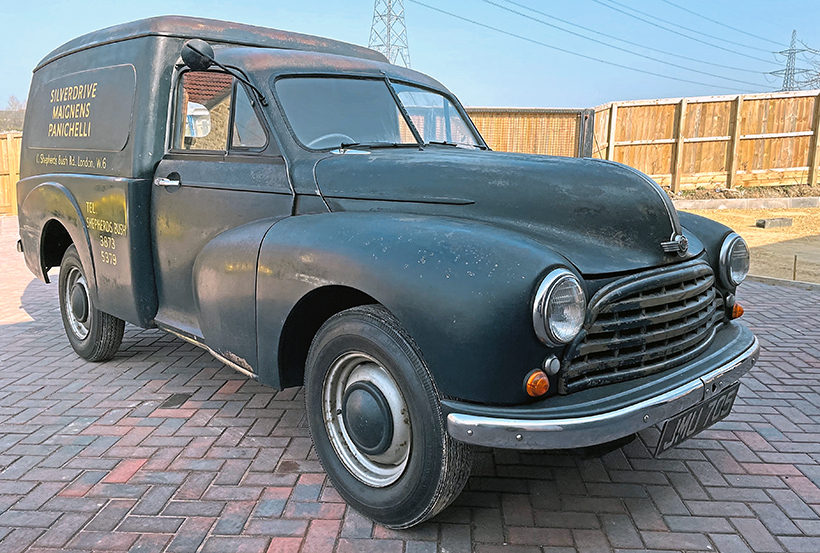
1951 Morris Cowley van: The magnificent survivor – vans don’t come much more original than this one!
Old vehicles that have defied all the odds and survived for many years, have nostalgia in large doses – especially if they’re 71 years young. Recently, while visiting Andrew Hardy Classics in the north-east, I discovered just such a van.
Actually, that’s not true – rediscovered would be a more accurate description, as when I visited Andrew Hardy Classics, and came across this fascinating van I remembered it well; it featured in the very first edition of Classic & Vintage Commercials back in September 1995, and in an update in the November issue.
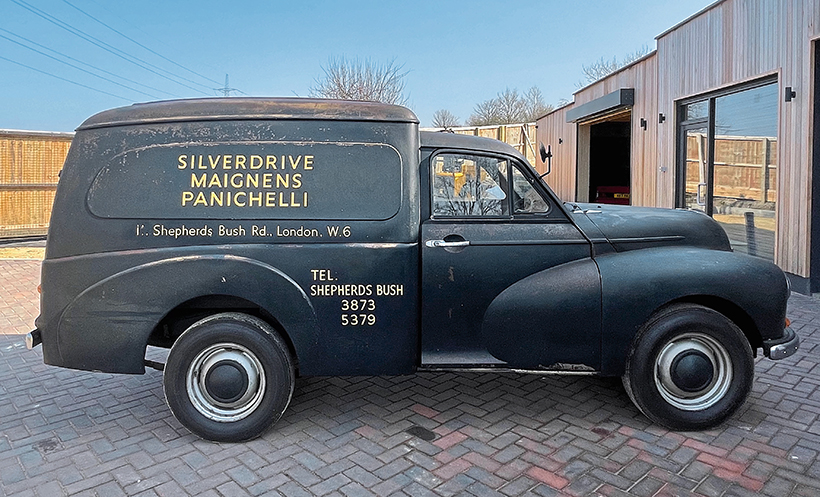
Original sign-writing had been covered by aerosol paint, but is now visible again.
The original article described how the van had been discovered early in 1995 in a garage in Holland Park Mews, Kensington, West London. From here, reputedly Britain’s most expensive place to live, the van, covered in thick dust, came out into the bright daylight for the first time in nearly 40 years. At that point no one was sure what colour it was, when some of the accumulated dust and grime had been removed, it appeared to be a very dark shade of blue or green.
Despite looking like the then current Oxford saloon, and sharing its front sheetmetal, the commercials were officially called Cowley (although there wasn’t a Cowley saloon in the range at that time) to signify a lower level of trim. The bonnet hinges were chromed, but that was it; the window frames were black rather than stainless steel and initially bumpers and hubcaps were also painted black.
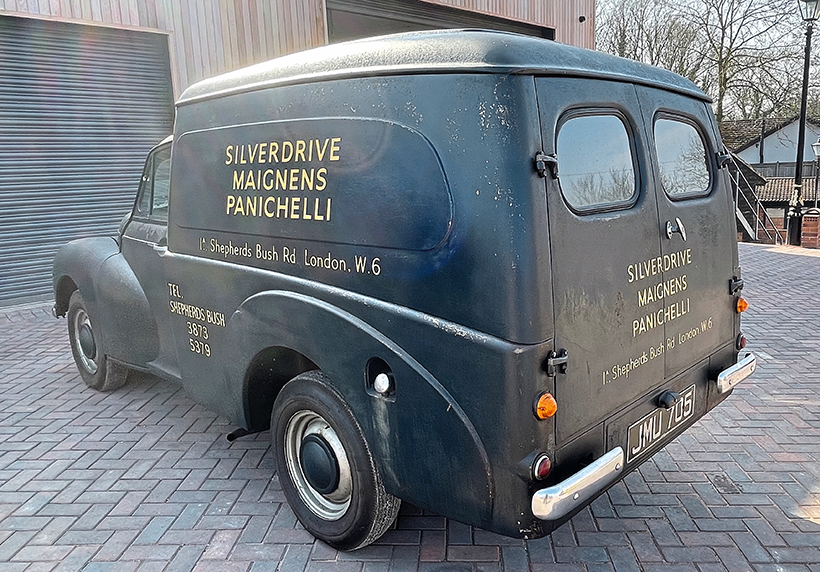
From the rear. Direction indicators are an addition – the original spec expected drivers to use hand signals.
Inside, the car’s clock was replaced by a blanking plate, but the ammeter, oil pressure gauge, fuel gauge and a deep full-width parcel shelf below the dashboard survived the de-trimming. There was also only one sun visor, and the windscreen wiper’s auto-park was deleted, meaning the wipers stopped where switched off.
This van was built at Cowley between July 16 and 17 1951, despatched on July 24 and registered JMU 705 on July 30 by London area Morris distributors, Stewart & Ardern.
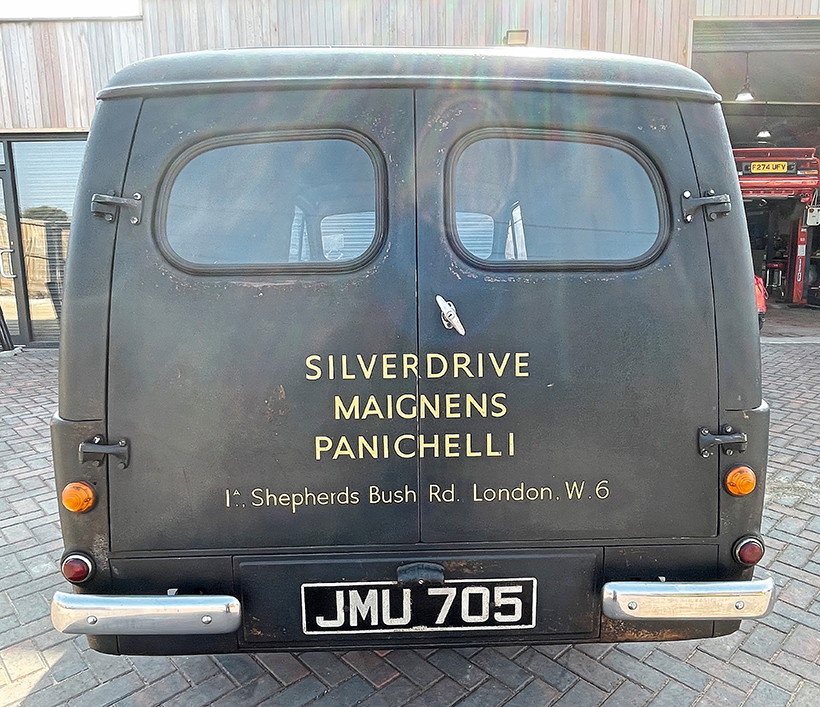
Wide, opening rear doors. Original registration was reclaimed with help from the 6/80 and MO Club.
Delivered from the factory in primer, it was finished in dark blue gloss and sold to Italian wine merchants Silverdrive, Maignens, and Panichelli, who were also wine importers and hotel owners! It was, though, registered from new in the name of Mary Beregi, of Holland Park, London, probably the company secretary. The van was used to offer local deliveries but seems to have been very little used.
The Morris was found abandoned in the large integral, domestic garage in late 1994 when a builder/developer, Steve Carson bought the associated mews, with the garage and its contents as part of the deal. The previous tenant of the garage could not be traced, and the original owner of the van had passed away.
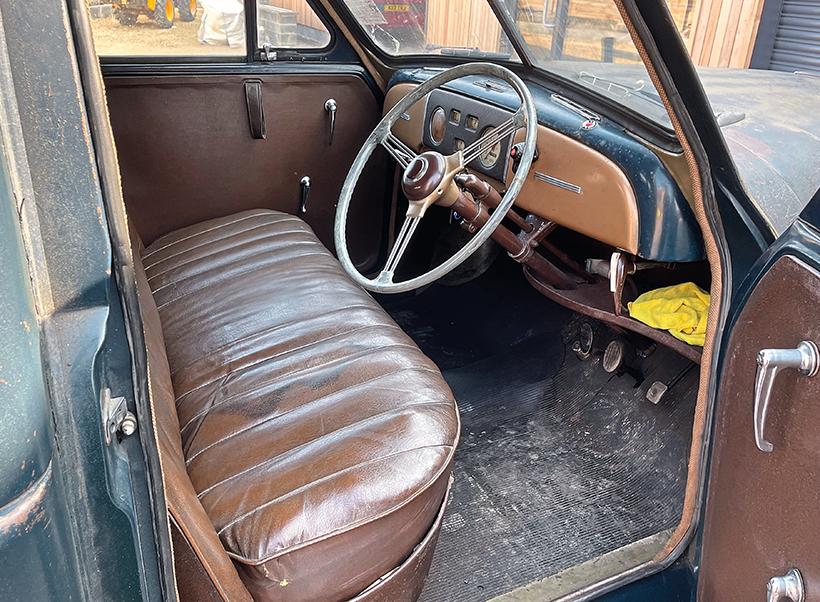
Cab, featuring optional bench front seat, and showing lack of wear consistent with a sub-5k mileage.
It was believed, though, that the wine merchant had sold the van having used it very little for just a few years, though this, like much else about this van, is far from certain and quite likely to remain so. The possibility of a second owner, is however, reinforced by an attempt having been made to cover up some of the sign-writing with an aerosol spray can of blue paint. The property vendor said that van had stood, unused, since about 1955 following a breakdown.
Later, in June 1995, when he had time to look closely at the van, Steve realised was in good shape with only 4461 miles showing. The engine had, however, seized so he made enquiries of the Morris Oxford MO and Cowley Owners Club what might be needed to get it back into use.
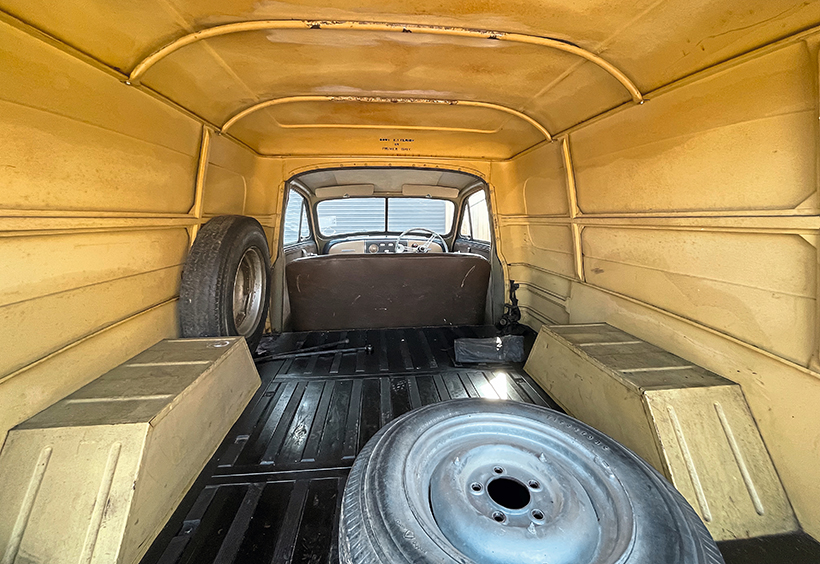
Load area, with extra spare wheel. Factory-fit spare on the load area nearside wall would be awkward to reach with a full load on!
He asked Richard Monk, a motor engineer and spares secretary of the club to extract the van, and make it presentable and roadworthy. So, early on Sunday morning, June 18 1995, Richard brought his transporter and mate Chris Tullet to recover the van. Access to the garage was tricky; Steve had to prise open the folding doors and prop up a sagging lintel. Cautiously Richard and Chris inflated the tyres with a foot pump, and were pleased to find the brakes free, so pushed it out on to the cobbles then winched it onto the truck.
Once back at base, Richard removed the engine, and on dismantling it found that the 40-year-old engine oil had turned to black jelly! New gaskets were fitted together with a new water pump and hoses, the radiator was flushed out; incidentally commercials had an extra row of tubes compared to the cars.
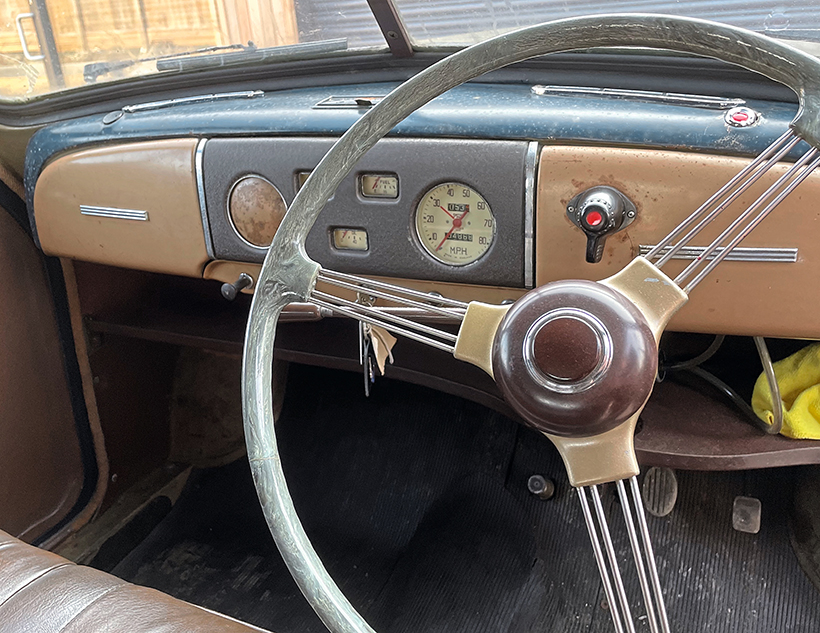
Dashboard retains most of the car’s minor instruments with the notable exception of the clock.
Removing the petrol tank allowed it to be thoroughly clean out. The exhaust system follows a similar path to the saloon; running along the nearside but then crosses over to exit behind the offside rear wheel to keep fumes away from pedestrians and the rear doorway. Its silencer had a small hole so was replaced and the tailpipe then was just ahead of the rear wheel on the nearside. In the interests of safety, all the brakes were overhauled and rebuilt, the black road wheels were blasted and repainted silver, fitted with new tyres and tubes as originally. The electrics were checked over; the reason for the breakdown was simply a faulty ignition coil! The chassis was cleaned off and coated with 15 litres of black Waxoyl. Richard was the first to take the toolkit out of its cardboard box, untie and roll it out – it and the bottle jack had never been used.
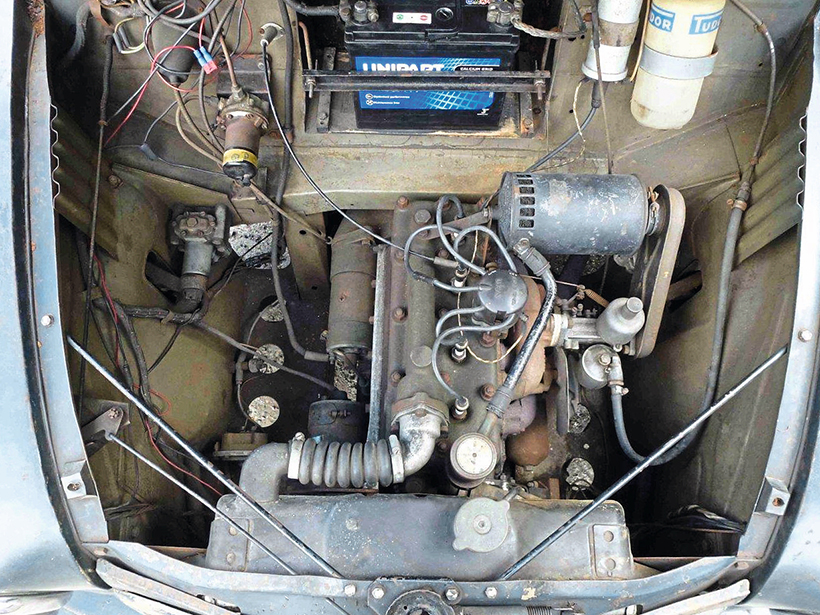
Engine bay, with plenty of spannering-space and lots of Nuffield heritage including SU carburettor and electric fuel pump.
The chrome was pitted and peeling in places, the front bumper particularly rusty, but both front and rear bumper blades were replaced; their fixing bolts, door handles, and bonnet hinges re-chromed. At some time, someone had re-plastered the garage ceiling with the van in-situ; large dollops of the stuff splashed down onto the van’s bonnet and roof – it was carefully soaked and removed. Richard, helped by his mum, painstakingly T-Cut the body to remove the blue spray paint and reveal the sign-writing intact! The van looked immaculate; its chromework glistening in the sun, the paint looked like new; possibly a deep, rich, Oxford Blue. However small scratches and chips were now noticeable, but they remain as part of its history. The good news was it passed its MoT easily, and by mid-September – all the work had been completed in just two months.
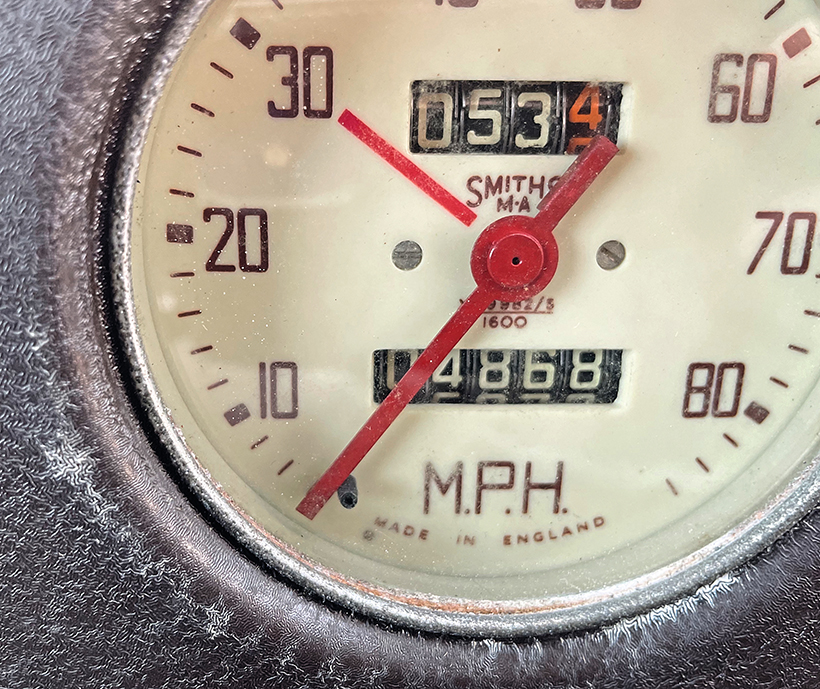
With just 4,868 recorded miles in 71 years, just over 400 have been added since 1995.
Once completed, the van was returned to Steve Carson who kept it until 2014 but only used it a couple of times. It was sold to another club member in Staffordshire, Michael Paulley, who prepared the van for the road again and got it MoT’d in 2015. He also obtained a BL Heritage Certificate (stating the build and despatch dates) and with the club’s help reclaimed the original registration.
Michael kept the van warm and well sheltered but again it was little-used. Later it went to Trevor Colhoun a dealer in Ireland, later he did a deal with the previous owner; selling back the van in exchange for a very early Cowley pick-up with; financial adjustment. Eventually the van arrived at Mathewson’s Auction in North Yorkshire, from where Andrew bought it in 2019.
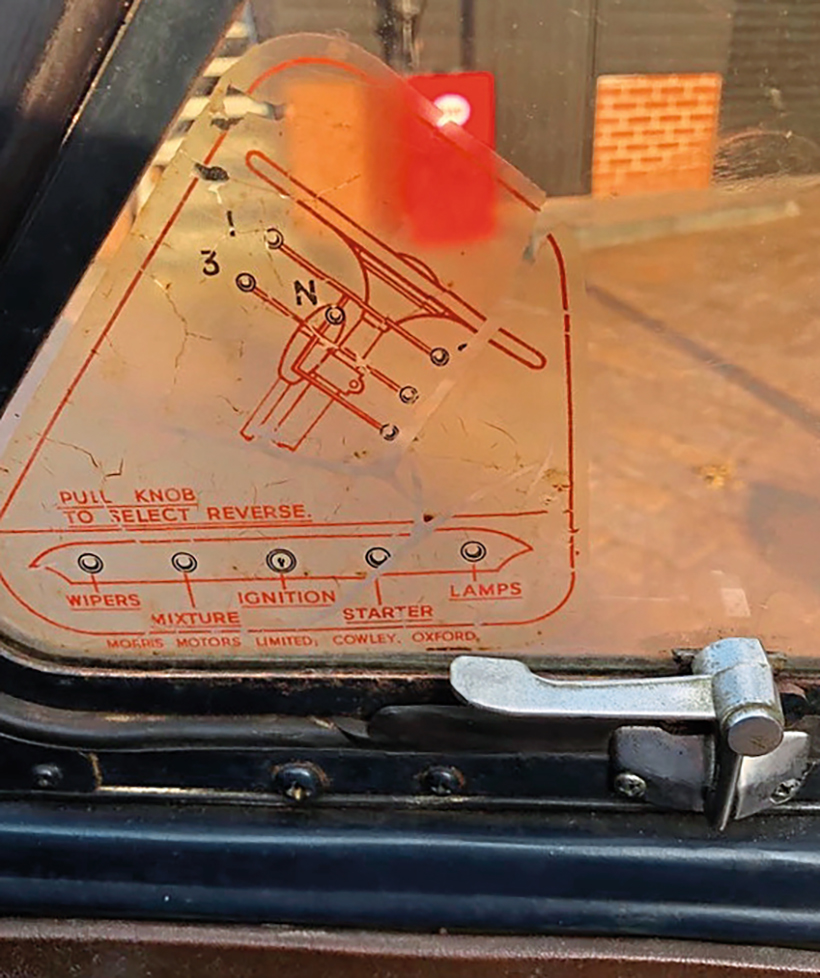
Original driver directions present and correct on offside quarterlight.
The original article put the van as a 1956 model (later corrected to 1951). Looking at the van now, its condition is totally consistent with the extremely low mileage. The paintwork has become thin in places with age. But inside the seat edges are not frayed, the pedal rubbers show no heavy wear, in the van still lingers that new car smell. The toolkit is still wrapped in its cloth roll, the grease gun unused, its barrel completely dry and even contains a rolled-up instruction sheet for filling and use!
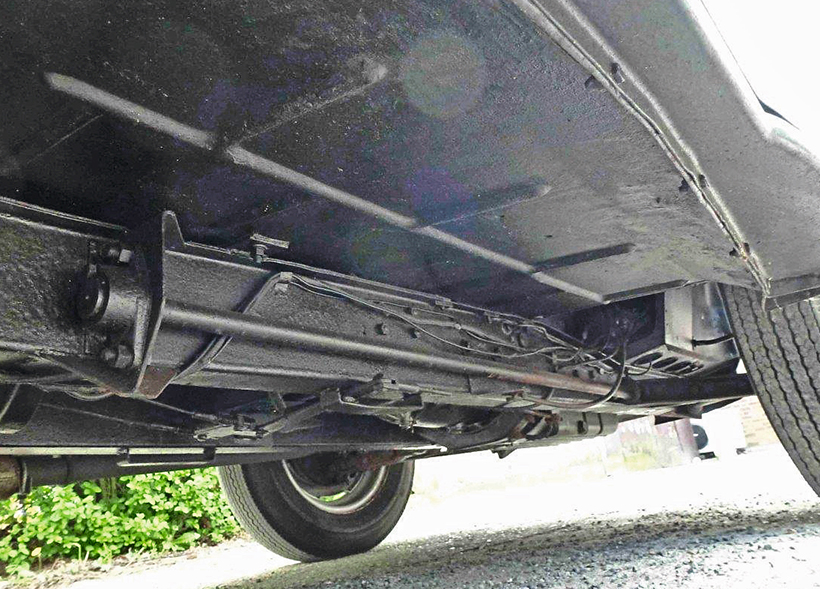
More Nuffield-ness underneath, in the form of torsion bar front suspension. All very clean and original.
The VIN plate gives the chassis number prefix as SMCV (Series Morris Commercial Vehicle) 6380, engine no. 94,867. The body number is V1384 from a thin aluminium ribbon tag attached to the engine bulkhead. From April 1952 Morris adopted the prefix P for half-ton, then F for a pickup E for a van (at the same time, logically, the Minor commercials used O prefix). Curiously another number had been hand-stamped on the bulkhead, in the bodybuilding shop: MCV3680, this was the intended chassis number (but had been already used in January 1951 for another van) obviously stamped in error by someone misplacing the first two digits. The mistake was quickly noticed and the correct one, from the factory ledger, put on the VIN plate.
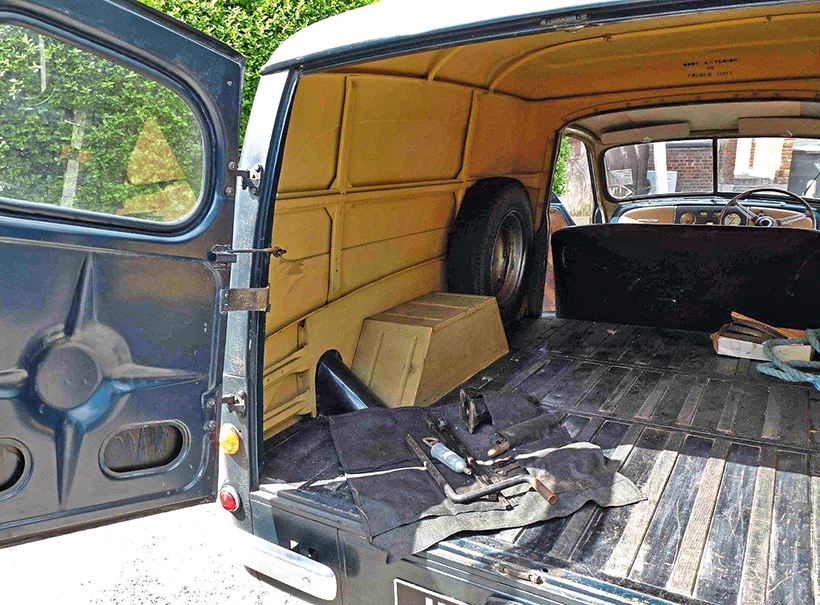
The original toolkit – including grease gun – is still present and correct.
Inside, above the cab back entrance from the load area, is stencilled ‘External body in primer only’. The load area is finished in a ‘light straw’ paint shade. On the driver’s door quarter-light is the original transfer showing the gearlever positions, a ‘Running In’ transfer was on the passenger’s windscreen (engine speed had to be restricted for the first 500 miles to allow the moving parts to bed-in).
In 1951 the unpainted van would have cost its first owner £486-6-1 including Purchase Tax.
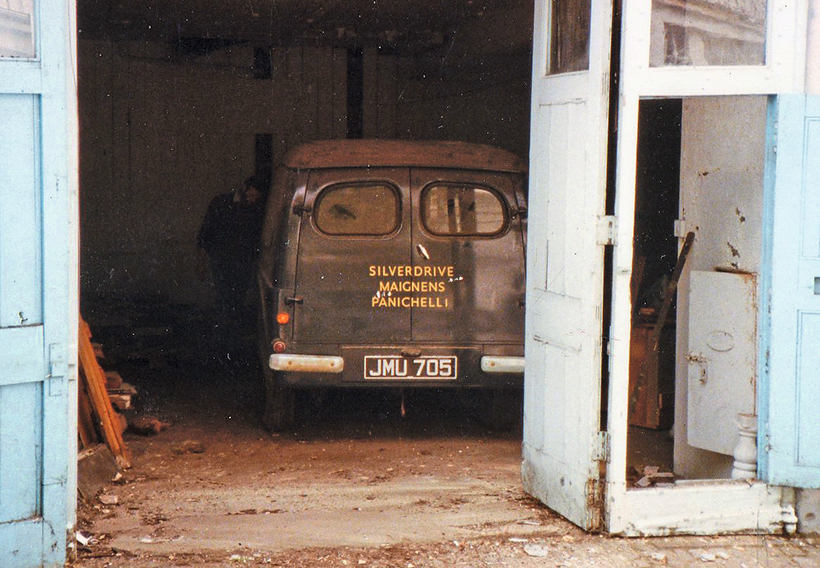
First sighting of the Cowley van in its resting place for more than 40 years.
Trimmed in light brown vinyl, this van has the optional bench seat in place of the standard single, driver’s bucket one, at an additional cost of £7.-0-7 plus £1-19-0 PT. Alternatively, another bucket seat for a passenger would have cost £4-15-0 plus £1-6-7. Curiously PT would not have been charged on these if ordered with a chassis/cab. With the bench seat came two sun visors, and since the umbrella type handbrake was under the dash and the gearchange on the steering column, three could ride in the cab. No provision for direction indicators was included – the driver was expected to use his arm. Unsurprisingly though, a set of flashing indicators has been fitted at some time by someone.
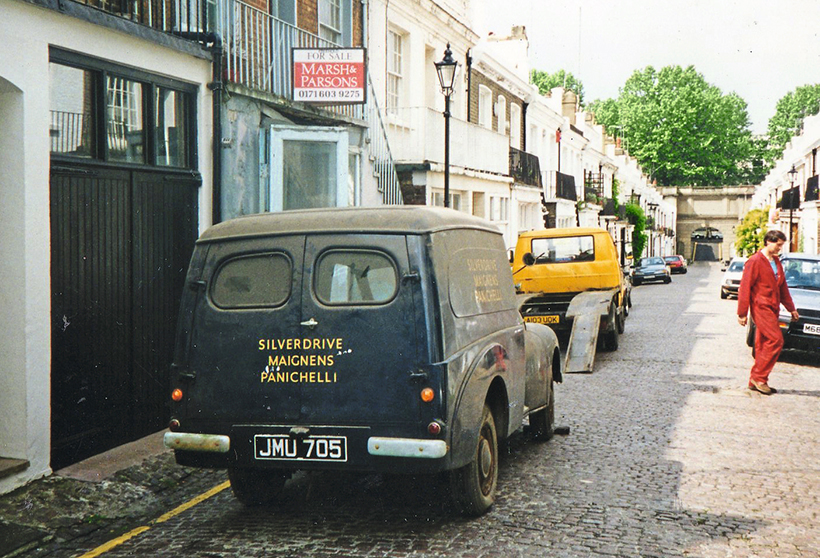
Out, and about to be loaded. A West London mews isn’t where old vans are typically discovered.
Under the bonnet, a four-cylinder 1,476cc, 40.5bhp side-valve engine sits with room to spare all round, as the original design envisaged a flat-four power unit. The battery sits on a shelf behind the engine on this van, but if the optional heater had been specified that would go here, and the battery would then be placed further forwards, near the radiator. The drive then goes to a four-speed gearbox with synchromesh on the top three forward gears and column change. Front suspension, in classic Morris/Nuffield-style, is by longitudinal torsion bars, with semi-elliptic leaf springs at the back.

Brochure photo – as was common at the time, a chassis-cab only version was also offered.
So there we are – is this the most original Morris Cowley van left? It isn’t immaculate; far from it, but it has a precious patina that is far too precious to be lost through restoration. Though now at almost the opposite end of the country to the London mews where it was stored for so long, the van is now in very safe hands, and receiving exactly the right conservation-type care that such a precious artefact needs.
My very sincere thanks to Hardy Classics for supplying photographs of the van as it is now, and several members of the 6/80 and MO Club for invaluable help and historic photographs.
This feature comes from the latest issue of Classic & Vintage Commercials, and you can get a money-saving subscription to this magazine simply by clicking HERE

Previous Post
Vintage Horticultural & Garden Machinery Club’s Working Day
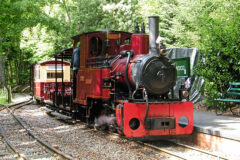
Next Post
Rural Life Living Museum working weekend



